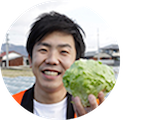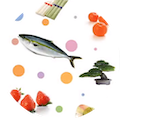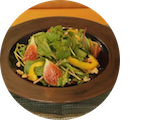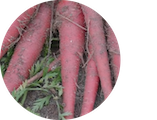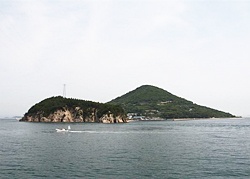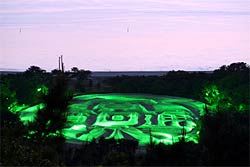LOVE Sanuki's report
Episode 74
One of the major projects of Yoshimoto, "A project to live in your town", to make Japan feel good from the area. Entertainer "Kaji Tsuyoshi" who lives in Kagawa reports on local products.
reporter
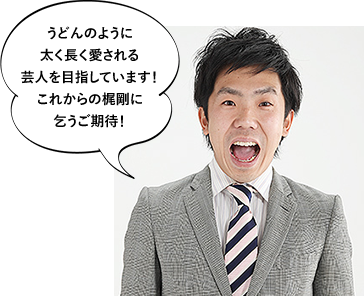
KAJI Tsuyoshi
NSC Osaka school 22nd grade
2005 Formed "Katsuyama Kaji" with Moody Katsuyama
2008 ABC Comedy Newcomer Grand Prix Newcomer Award
2010 Active as a pin entertainer
Birthplace: Mitoyo City, Kagawa Prefecture Born March 1981, 3

Kagawa Prefecture is the number one producer of eggs in Shikoku, and is one of the most prosperous prefectures in Japan.
Each producer puts their ingenuity into producing eggs with their own characteristics.
Mr. Kaji reports on everything from egg production to cooking in Ayagawa Town and Marugame City, Kagawa Prefecture.
-

Chicken farming is thriving in Kagawa Prefecture, which has a warm climate.
Mr. Kaji visited Nobukazu Obayashi of Obayashi Poultry Farm, which produces eggs.The fresh eggs that Shinichi prepared for us this morning are reddish in color.
-

In Kagawa Prefecture, which has a small area of rice fields, poultry farming has been actively practiced for a long time.Mr. Shinichi says that the weather conditions are suitable for poultry farming, as the mornings and evenings are not extremely cold, and the climate is mild with little rain.
When Shinichi started poultry farming, there were about 400 poultry farms in Kagawa Prefecture, including small poultry houses. -

Obayashi Poultry Farm has been in business for 3 generations since my grandfather's generation.
Obayashi Poultry Farm has a history of 70 years since Shinichi's grandfather's generation.It has been 50 years since Shinichi took over the poultry farm.He now has about 6 chickens.
The poultry farming industry has been in a difficult situation for about 20 years, with the retail price of eggs kept low and the price of feed soaring.Under such circumstances, Mr. Shinichi has devised ways to make bait based on his experience researching bait at a trading company in order to differentiate his eggs from other eggs. -

Food is closely related to the color and taste of eggs
At Obayashi Poultry Farm, two types of feed are made with a unique combination.
The first is the food for chickens raised in the poultry house (back right of the photo), which is mainly corn mixed with 1% of the seaweed sargassum (center of the photo).It seems that seaweed has the effect of making the yolk plump and reducing the fishy smell of the egg.
The second is food for free-range chickens (back left in the photo), which is mainly made of domestically produced brown and white rice, and is also mixed with millet.With the desire to raise healthier chickens, free-range chickens are raised in conditions close to their natural environment, and we are particular about domestic grains. -

Food is closely related to the color and taste of eggs.
Egg yolks are yellow because the beta-carotene pigment contained in the corn they eat acts on them.Some manufacturers mix paprika into the food to make the yolk even darker.In addition, by mixing seaweed, the yolk becomes a darker color.
On the other hand, brown rice and white rice do not contain β-carotene like corn, so if you eat a lot of brown rice or white rice, the yolk color will be whitish.The difference is obvious when you compare them. -

“Boiled eggs for brown rice have a smooth and smooth texture. The taste is different from other eggs,” says Shinichi.The deliciousness of the eggs is the result of repeated research on the composition of the feed.
"That's the reason why we study food," said Mr. Kaji.
Shinichi's eggs are sold at roadside stations in Kagawa Prefecture, and he seems to have many fans. -

Visit an egg factory
What kind of process are the eggs that have been laid before they are shipped?
Kaji visited Free Egg Marugame in Marugame City, Kagawa Prefecture.
“This factory receives eggs every morning from poultry farms from Takamatsu City to Shikokuchuo City, Ehime Prefecture.”
Mr. Kenji Osaka, who guided me, told me. -

Mr. Kaji was surprised to hear that 12 eggs are collected every day, or 4,400 million eggs (3,000 tons) annually.About 70% of them are shipped to Shikoku and about 30% to the Kansai area.
Mr. Osaka gave us a tour of the factory to see what kind of processes the eggs go through before they are shipped. -

Delivering safe and secure eggs through quality checks
Before shipping, there are processes of egg washing, egg candling, sorting, and packaging.
The eggs that arrive from the poultry farm first pass through the egg washer.Wash with hot water at 55-60°C containing sodium hypochlorite solution while brushing to remove bacteria on the surface of the shell.
The washed eggs are dried in a dryer and various checks are performed to prevent bacteria from sticking to them. -

Check for dirty eggs with "Dirty Egg Detection".Next, check for cracks with "crack egg detection".Next, "abnormal egg detection" shines light on the eggs and checks for abnormalities in the contents.They are then weighed and packed according to weight.Finally, we visually check the packed eggs on a round table.
-

"We manage our food based on the food safety management standard called 'HACCP.' There are so many items to check that it's difficult, but we're thorough so that everyone can eat with peace of mind," says Mr. Osaka.
“I thought it was only natural to see beautiful eggs lined up in supermarkets.
Mr. Kaji was impressed by the thorough quality control, and once again felt his gratitude to the people involved. -

A bistro where you can taste eggs from Obayashi Poultry Farm
Mr. Kaji went to Bistro Fille et Fes to taste delicious egg dishes from Obayashi Poultry Farm.
This shop is run by Mr. Koichi, the son of Mr. Shinichi Obayashi of Obayashi Poultry Farm.Recommended egg dishes are omelet rice and chiffon cake.
“The omelet rice uses eggs from chickens raised on corn and seaweed, and the chiffon cake uses eggs from free-range chickens raised on brown rice.”
Koichi uses two types of eggs depending on the dish. -

Soft-boiled egg omurice with rich egg flavor
“Start with the omurice. Enjoy it while it’s warm and soft-boiled,” Koichi recommended.
When you put a spoon in it, you can see the cross section of the soft-boiled egg and rice entwined, whetting your appetite.
"It's delicious. The eggs are thick. The sauce is on top, but you can feel the thickness of the eggs even more than that. The scent of the eggs spreads in your mouth." -

“I put the eggs in a frying pan until they are soft-boiled, then put the rice on top and roll it up quickly. I finish it so that the points where the eggs and rice meet are soft-boiled,” says Koichi. taught me.
-

Brown rice bait egg chiffon cake with outstanding whiteness
“Please try the chiffon cake,” Koichi-san recommended after the omelet rice.
"This chiffon cake is really white."Brown rice bait eggs are characterized by their whiteness that stands out even more when heated. -

Bistro Fille et Fes is particular about using rice flour instead of wheat flour for the chiffon cake, which matches the egg on the brown rice bait.
Kaji took a bite of the chiffon cake. “It has a fluffy texture. It looks white, so I thought it wouldn’t have a strong taste, but you can definitely taste the egg.” -

Omelet rice with corn bait eggs and chiffon cake with brown rice bait eggs.Mr. Koichi says that by making the best use of the characteristics of each egg, he created an original dish with a different appearance.
Mr. Kaji was surprised by the difference in color and taste of the eggs, and was also surprised when he ate them.
Eggs from chickens raised with special attention to food.Cleaning and detection to deliver it with peace of mind.And a dish that maximizes the deliciousness of eggs.Mr. Kaji realized that many people were involved in making delicious eggs.
















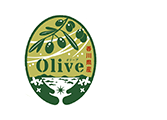 Olive products from Kagawa Prefecture
Olive products from Kagawa Prefecture



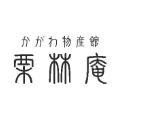
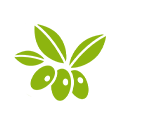 Stores handling olive-related products
Stores handling olive-related products
